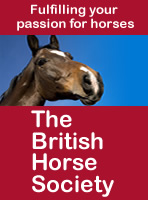
Horseytalk.net/Hoofbeat EXCLUSIVE
RIGHTS OF WAY WATCH
Grazing is always used as an excuse for fencing
And fencing creates problems for riders
But, asks Steve Yandall,
Is there a con in conservation or an ed(it) in education?
 Grazing
is the 'honed edge' of conservation and driven by agri-environment payments,
which are weighted toward making grazing a clear business choice,are causing
conflict in the countryside.
Grazing
is the 'honed edge' of conservation and driven by agri-environment payments,
which are weighted toward making grazing a clear business choice,are causing
conflict in the countryside.
Grazing impacts on access and causes concerns for Barn Owls,reptiles,archaeology and the very character of our landscape.The result of cattle grazing is also reliant on expert management thus grazing remains a potentially damaging variable.At its best (Chapel Carn Brea,Cornwall) it is excellent but at its worst it is very damaging. Macro management over a short time span impacting on a landscape created by micro management over millenia. Quick fixes seldom work.
No evidence exists to argue against grazing as a part of an environmental 'tool kit' but blanket imposition is very dangerous and takes us into unknown territory regarding cause and effect.
Isolated, existing, herds which are now at risk of disease transmission as areas between herds are infilled with rare breeds poses a threat to existing farmers and, if F&M breaks out, a threat to tourism far beyond the outbreak 10 years ago.In W.Penwith bovine TB has occurred for the first time in 40 years as HLS grazing spreads through the area.
Two major natural factors exist that effect the current policy;
- Rabbits were absent during much of the time that conservation research was undertaken(or very cyclical)but are now fairly stable and undertaking their past roll in landscape formation(scrub encroachment occurred in their absence)
- Deer numbers are growing exponentially. We thus have two major grazing impacts being added to by Cattle.
To illustrate the 'blinkered' view of some a document written by N.McNanch on Choughs stated that Chough numbers dropped following Rabbits being effected by Myxamatosis and showed recovery as the impact of Myxamatosis on Rabbits changed.
Research done by Johnstone, in Antrim ,states that grazing with cattle,on coastal heath,to create Chough habitat does have negative effects. Nature appears to provide a sustainable,integrated answer through Rabbits but we have to intervene (or do we)? My own observations in Cornwall are that Chough fed on areas,like Gwennap Head(coastal heath)that was Rabbit grazed,before cattle were introduced to aid Chough reintroduction!
I am 100% in favour of rewarding stewards for maintaining natural areas but,I believe,that cattle should not represent more than 30% of any regime and that compromising access(and thus public sympathy) could,in most instances, be avoided. Certainly the imposition of grazing that has negative species impacts must be entirely avoided.
Within the current financial climate the Rabbit offers us at least an alternative to think about and potentially a huge cost saving! (Vermin on farms of course!).
Why is information like this not freely disseminated? Why is 'innovation' not used?
It is for you to judge whether there really is a 'con 'in conservation or whether education is edited and whether an agenda lead system can ever achieve the obvious benefits that are currently being denied to equestrians/disabled/elderly etc?
Rabbiting on or fair? Certainly food for thought!


